Smartphones & Tablets | December 9, 2023
![]()
Google is releasing its new high-end devices, the Pixel 8 and Pixel 8 Pro smartphones, and the Pixel Watch 2, on Thursday, October 12. The clear ambition is to establish the Pixel brand recognition among users and raise the bar in terms of capabilities, experience, and differentiation.
At a time when the mobile market has contracted, Google has managed to navigate the storm by growing in different markets, understanding that users increasingly opt for higher-value products that can last in the long term even if they are more expensive. This is precisely where the new Pixel 8 devices come in, improving the experience and specifications compared to the previous generation. They also enhance durability with the promise of updates for 7 years, albeit with a considerable increase in price compared to the Pixel 7 and Pixel 7 Pro.
The Pixel 8 and Pixel 8 Pro start at 799 and 1,099 euros, respectively, which is 150 and 200 euros more than the Pixel 7 and Pixel 7 Pro models. However, they are not the most expensive high-end phones on the market. For context, the Galaxy S23 and S23 Ultra start at 749 euros and 1,249 euros with the current promotion, respectively, while the new iPhone 15 and iPhone 15 Pro start at 959 and 1,219 euros, respectively. The Pixel Watch 2, priced at 399 euros, falls between the 379 euros of the Galaxy Watch 6 and the 419 euros of the Apple Watch Series 9.
We had the opportunity to test them for a few days to get a first impression of how Google’s new devices perform, whether they meet expectations, and if they are worth considering.
Google goes against the industry trend. While other manufacturers started by developing mobile phones and smartwatches, later evolving towards software solutions, Google’s approach is the reverse: to make devices as good as their software, leveraging a variety of applications and functionalities that Google offers online.
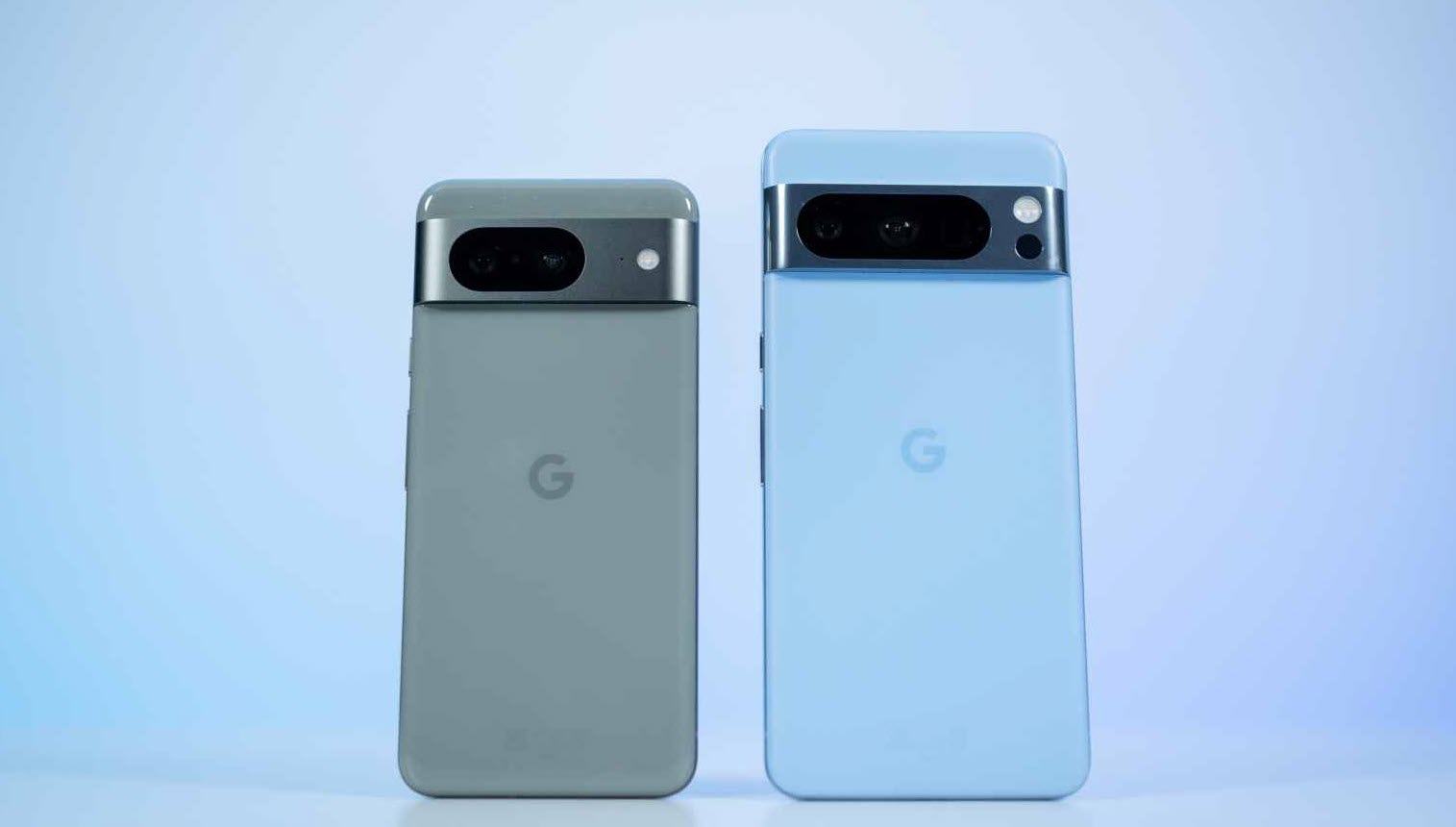
This offering is extensive, covering productivity at work, location with Google Maps, payments with Wallet, image processing, the Assistant, integration into the connected home, and more. These aspects converge into an overall user experience to meet their daily needs. In this sense, the Pixel 8 devices shine with the Tensor G3 chip, designed to leverage artificial intelligence (AI) for small daily tasks, allowing users to accomplish more throughout the day in less time.
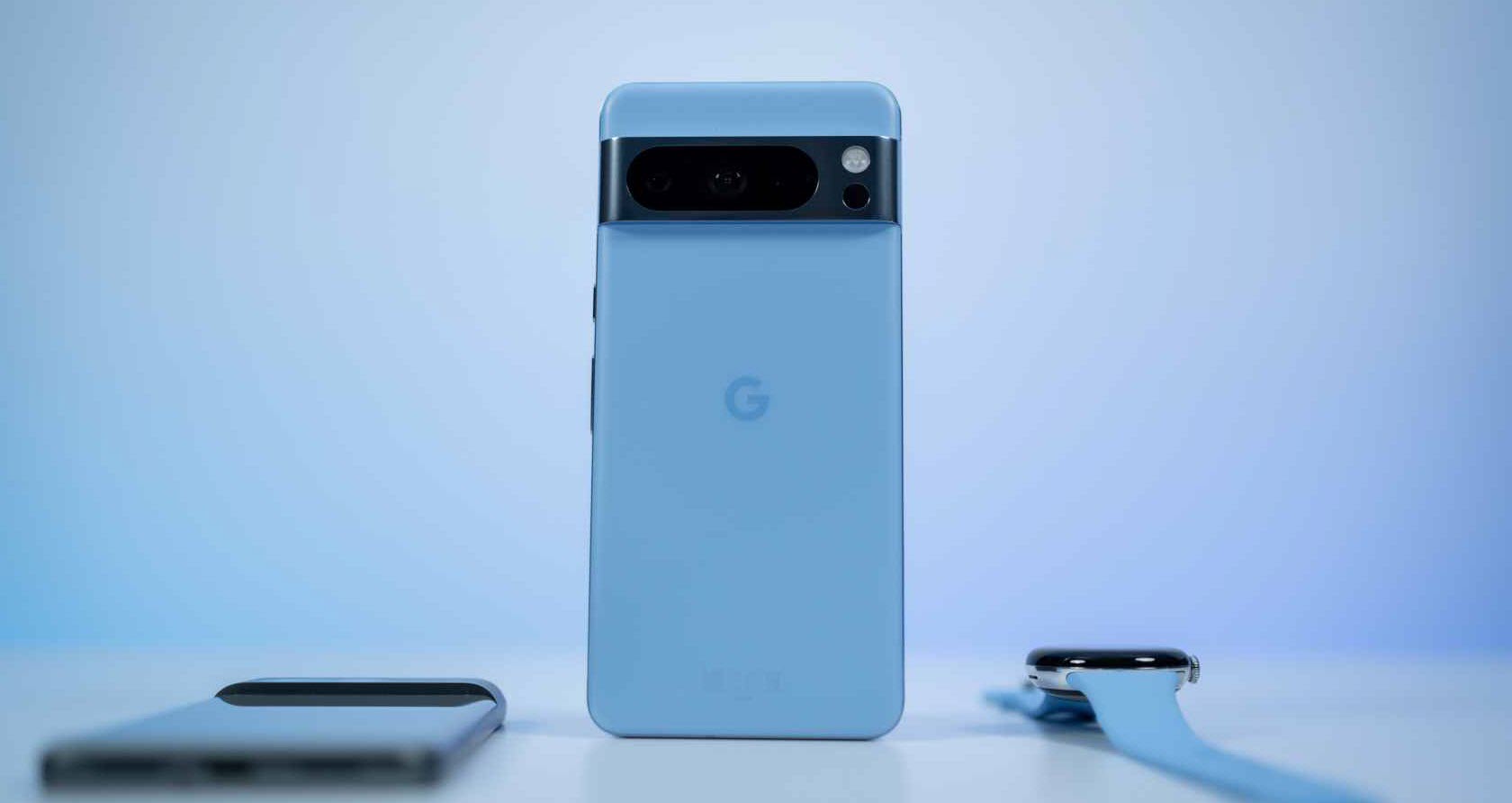
New features include voice recording synthesis, automatic transcription, spam call recognition, online information summaries, improved home automation connectivity, and clear call quality by reducing background noise. The new chip is the key to Google’s bold claim: its new phones are ready to receive full updates for 7 years, ensuring they can run on Android 21—or whatever it is called—in 2030. Along the way, battery replacement may be necessary, but Google will facilitate access to replacements through its after-sales service.
The Tensor G3 is accompanied, as usual, by Google’s security chip, the Titan M2, adding multiple layers of additional security to prevent information leaks, enable integrated VPN, and support the new facial unlock system that allows payments or login to banking applications. The commitment to seven years also applies to security certificates.
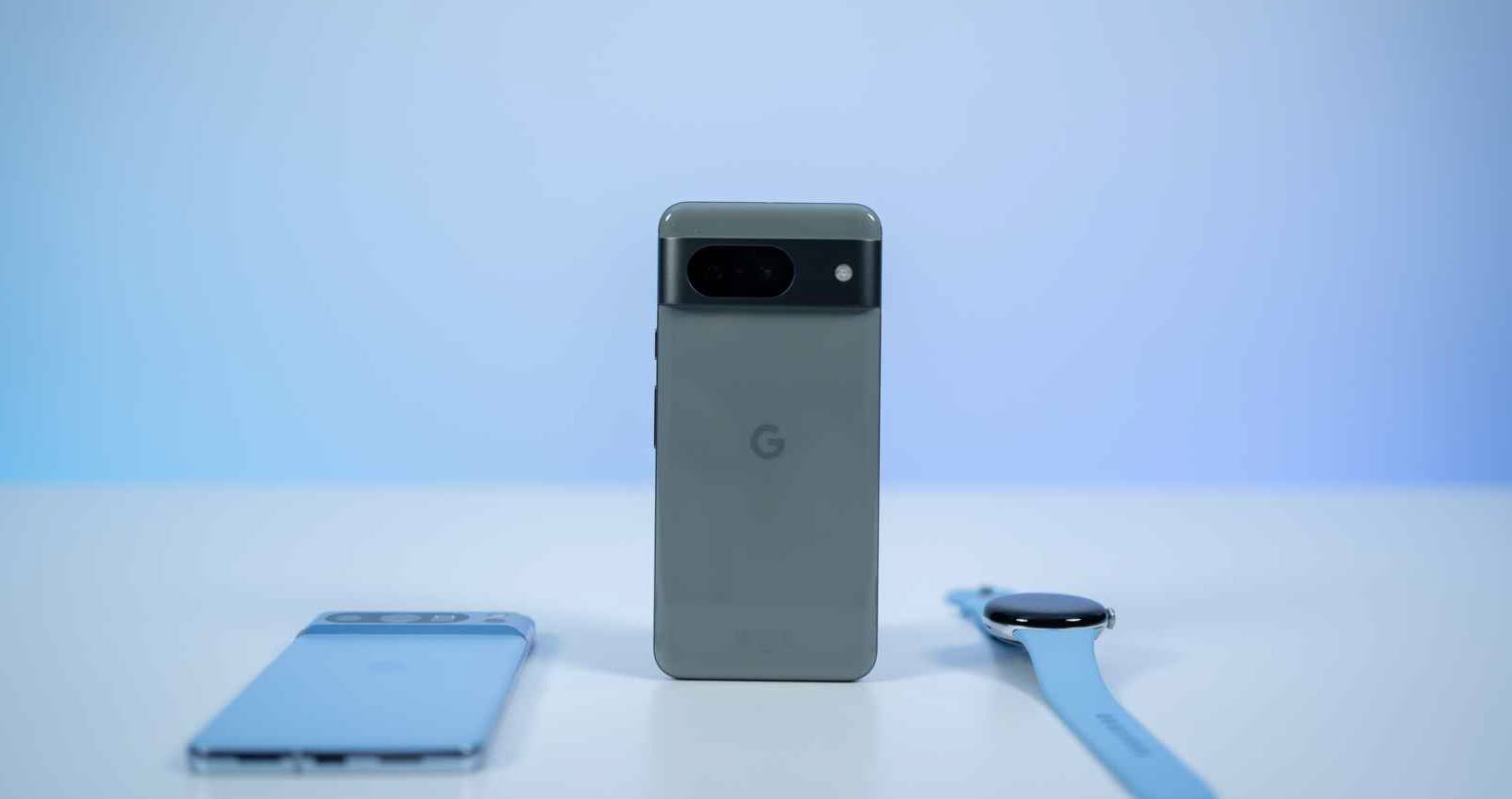
In terms of power, the differentiation between both models lies in RAM. The Pixel 8 Pro comes with up to 12 GB of RAM, while the Pixel 8 has 8 GB. Nevertheless, both operate smoothly and respond accurately to heavy tasks challenged by AI.
As more of a curiosity than a practical application, showcasing how Google wants our phones to be useful, the Pixel 8 Pro includes a thermometer. By pointing it at objects, we can determine their temperature. It’s not precise for use on people yet, but I found myself using it to check the water temperature in my kids’ bathtub these days.
The AI system of Google plays a crucial role in the processing and management of images captured by its camera. Although not the only factor, it is the main reason to consider purchasing this phone. Its handling of photography and video is almost magical; just press a button, and the shot will be perfect. This year, Google goes a step further, allowing more advanced users to take greater control with a new camera interface.
One of the differences between the Pixel 8 and the Pixel 8 Pro lies in the camera. While both share a 50-megapixel main camera, the superior model features multi-zone focus, a better 48-megapixel ultra-wide-angle (compared to the 12-megapixel Pixel 8), and an additional third lens with a 48-megapixel telephoto lens with 5x optical zoom and a high-resolution 30x zoom where AI also comes into play.
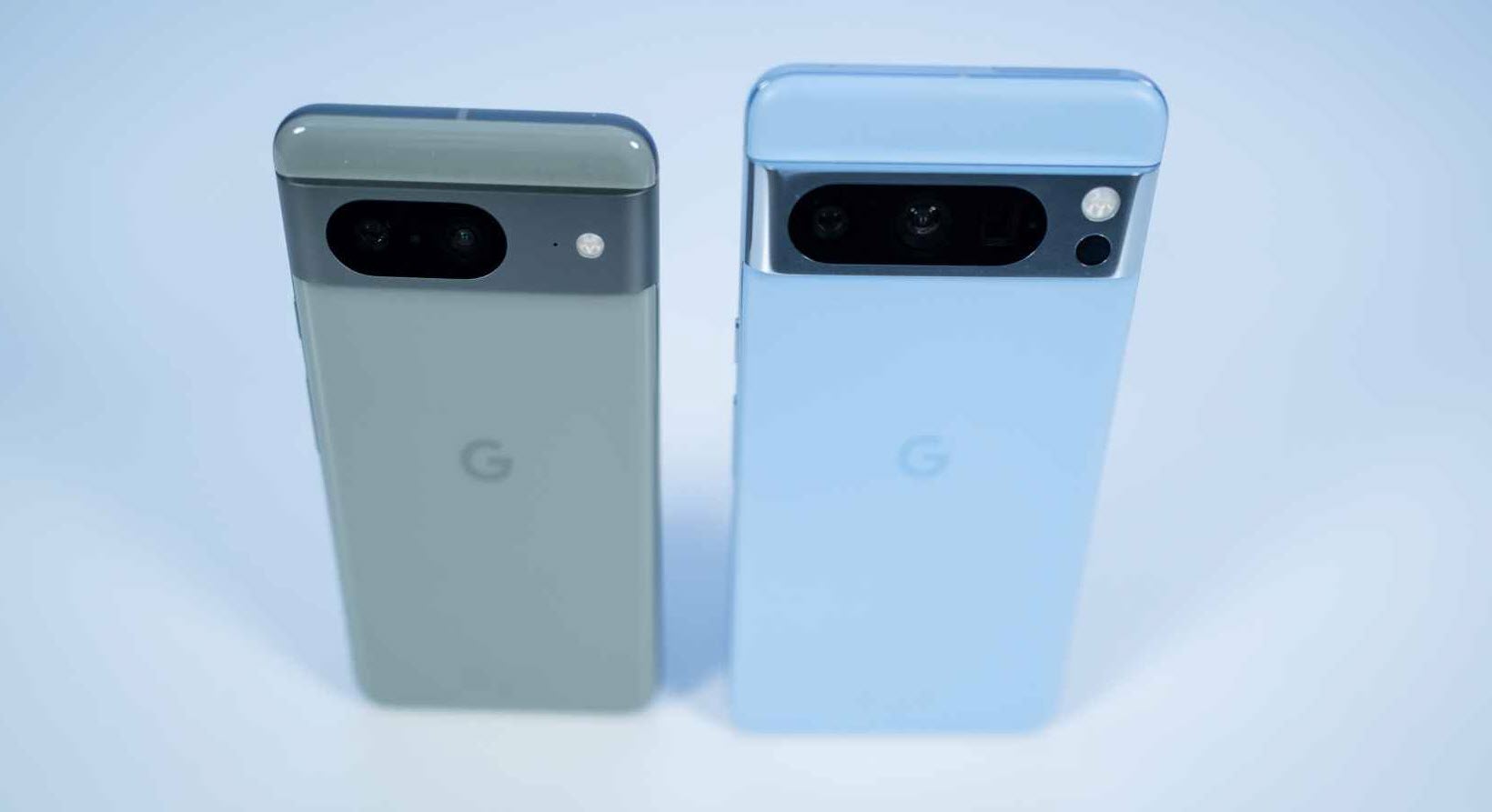
In general, the photos are better than the previous generation, thanks to a greater light absorption capability with a main lens aperture of f/1.68 compared to the f/1.85 of the Pixel 7 Pro. Similarly, the ultra-wide-angle and telephoto lenses of the 8 Pro are brighter than the Pro of the previous generation. It’s not a revolution, but a true advancement in the combination of hardware and software camera prowess.
This is where Google’s computational magic happens when taking photos or videos, with AI playing a crucial role. The phone has the ability not only to choose the scene, focus, and suggest what to shoot but also to provide features that blend science fiction with utilities that were previously reserved for advanced users.
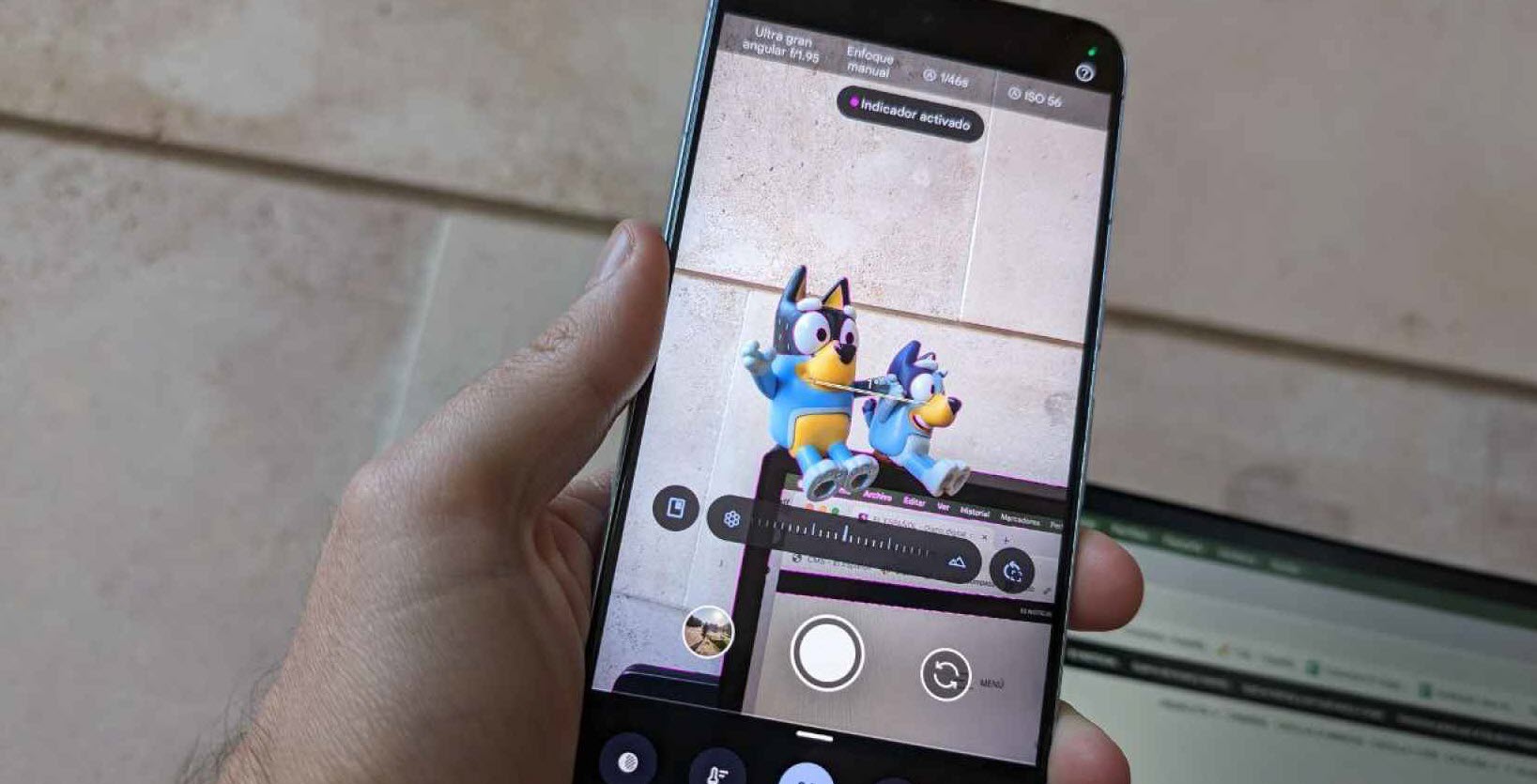
For example, one of the most striking features is the ‘Best Shot’ function, allowing the combination of several group photos to choose the best face for each member, even if that photo, in reality and to be purists, never existed. Similarly, in audio, we can eliminate annoying intrusions such as coughs or applause in a video that interrupts the song we are recording at a concert.
Beyond these advanced tools, the camera functions excel at what is expected from a high-end phone camera. Well-adjusted colors, precise HDR, fidelity in skin tone, a precise portrait mode—both in photos and videos—night vision, astrophotography, or features already present in previous generations, such as magic erasure or the motion mode that adds super stability to the phone.
One of the most interesting details of the new Pro model’s generation is the ability to access advanced controls in the camera. Now, we can not only choose the speed, ISO, or which lens to use exactly but also have manual control over the focus. A subtle pink shadow will highlight what is in focus, as if it were a professional camera viewfinder.
In the new phones, Google has opted to continue the design line that has characterized its phones since the Pixel 6. It was then that the company decided to differentiate itself from the rest of the market with a prominent camera module that spans from side to side on the back and vibrant colors.
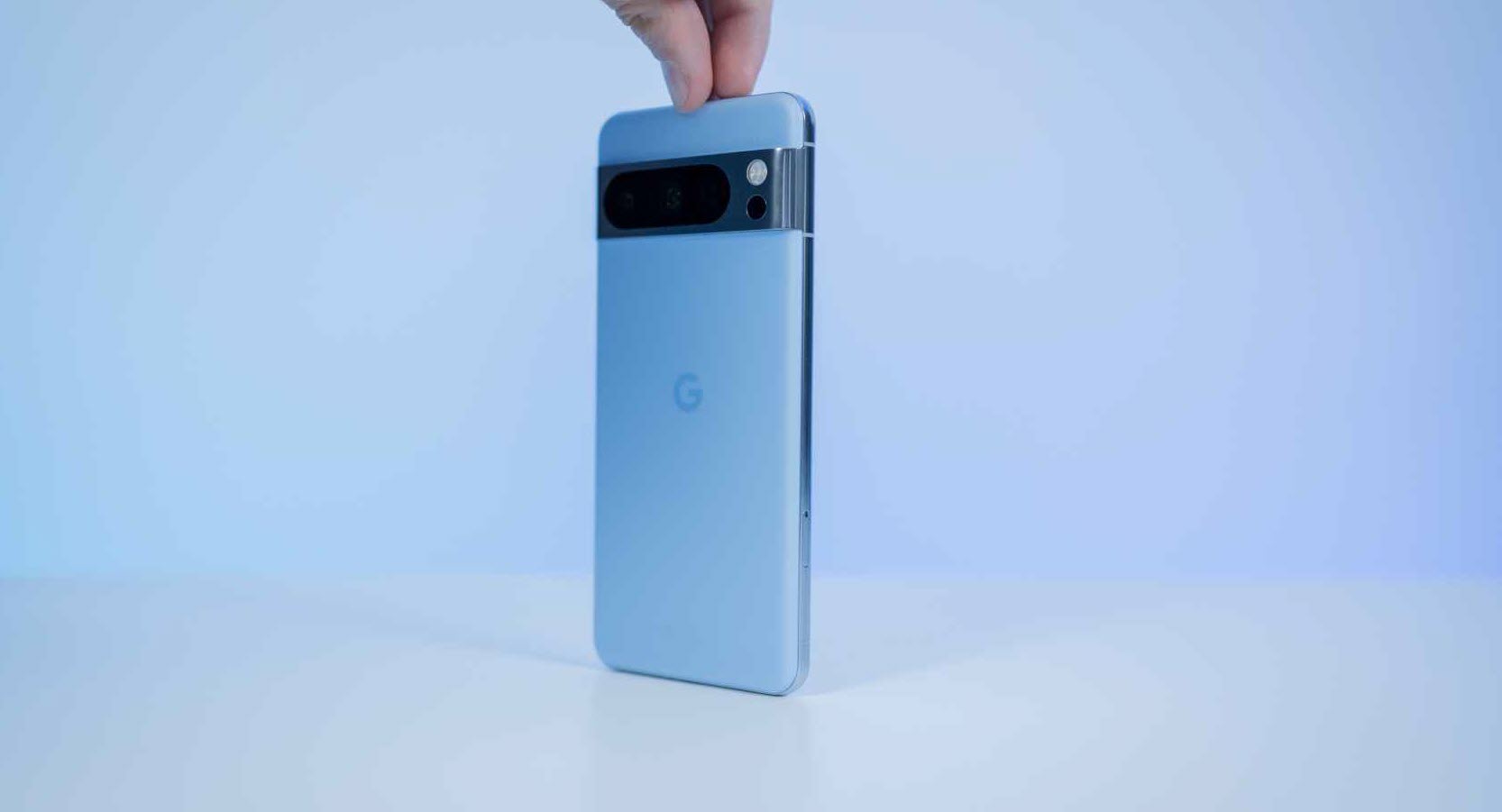
The company continues with this design line, allowing its phones to be recognized from a distance. This time, it loses the curved screen that the Pro model had in the previous generation, opting for a slightly more rounded silhouette, new finishes, and colors. The Pixel 8 Pro has a 6.7-inch display with a polished aluminum frame and a matte glass back, while the Pixel 8 has a 6.2-inch display with a satin-finished metal frame and a polished glass back.
In any case, the feel of both devices in hand is comfortable, ergonomic, and not slippery. Both have IP68 protection, making them resistant to liquid spills and dust, and the Pro model has Gorilla Glass Victus 2, while the Pixel 8 has the previous generation’s Victus.
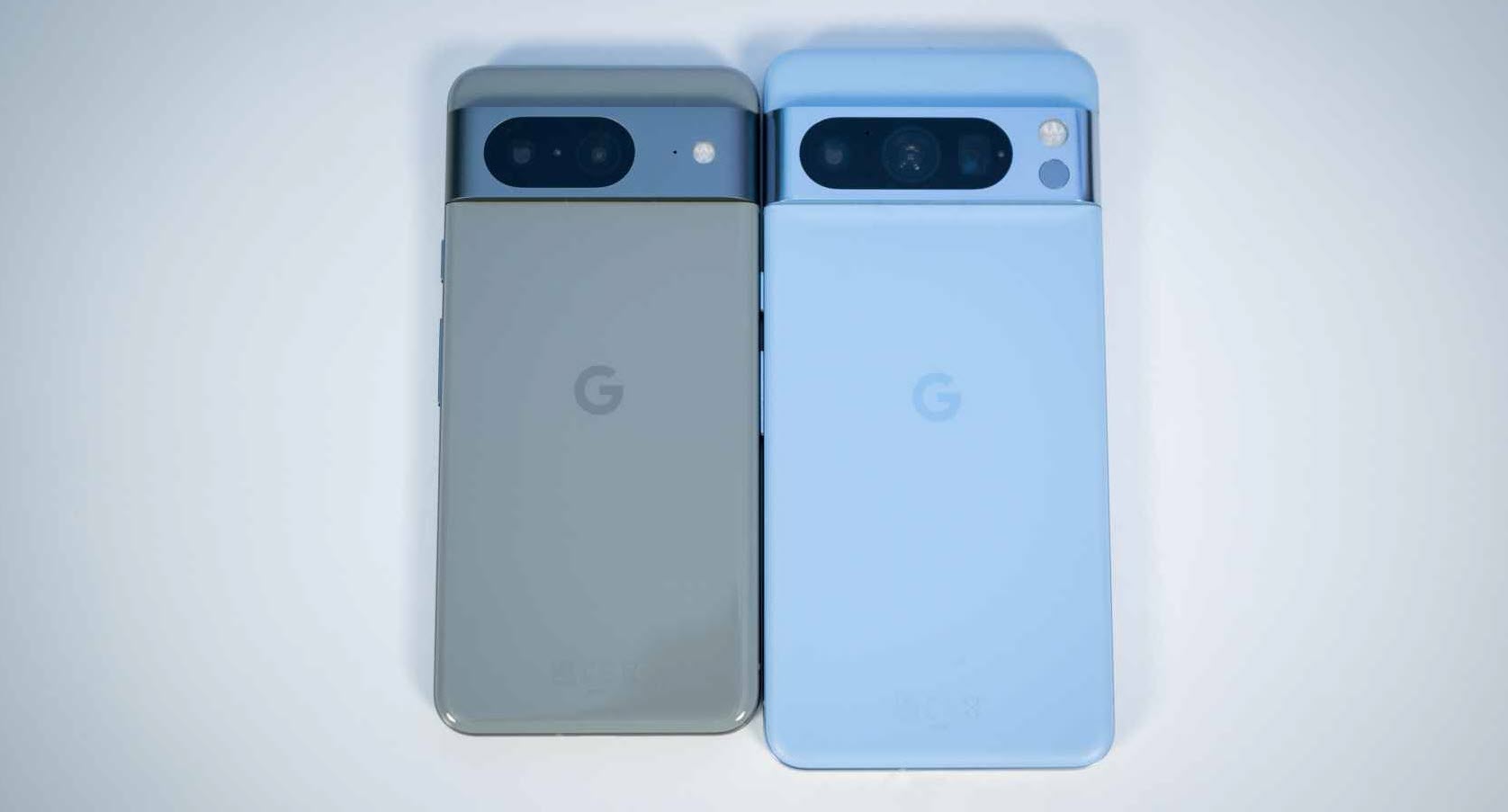
The major change in design is in the display. Google has increased the brightness in both models compared to the Pixel 7 Pro, with the Pixel 8 reaching up to 1,400 nits (HDR) and up to 2,000 nits when brightness is at its maximum in direct light situations. The Pixel 8 Pro is 1,600 and 2,400 nits, respectively. Both displays are excellent, and it’s a joy to use them daily.
Google has named this technology Actua and Super Actua Display, translating to an OLED panel at 428 ppi (1080×2400) and an LTPO OLED panel at 489 ppi (1344×2992), respectively, both with a 20:9 aspect ratio. The difference between panels also lies in their smoothness, as the Pixel 8 Pro offers a fluid refresh rate between 1 and 120 Hz, while the Pixel 8 is between 60 and 120 Hz.
Regarding battery life, both promise more than 24 hours, and Google delivers on this. Even with intensive phone use, you can be confident that you’ll end the day without issues. In terms of capacity, the smaller model has a 4,575 mAh battery, while the Pro model goes up to 5,050 mAh. Both support 27W and 30W fast charging and 18W and 23W wireless charging with the Pixel Stand (reduced to 12W with Qi).
Beyond the Pixel 8, the other star that Google is releasing on Thursday is the Pixel Watch 2. After the country missed out on the previous model—something common for the brand, which usually tests the first version in more mature markets to see how users react—the first smartwatch 100% ‘made in Google’ is now available.
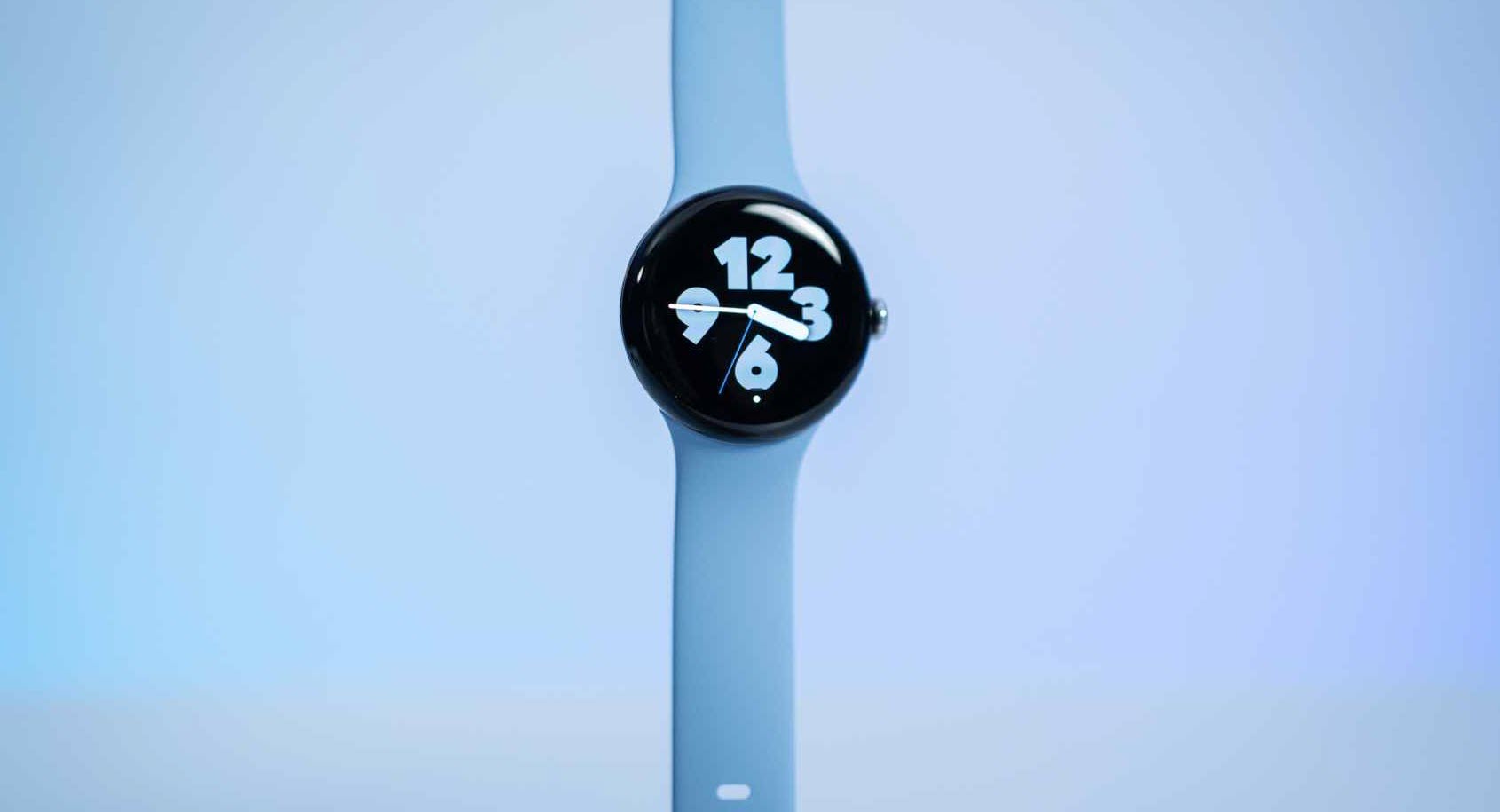
With a cute, rounded, and compact design, it features a 41mm dial that looks great on the wrist. It has an aluminum chassis with a beautiful polish and comes with a very pleasant and lightweight sports strap, matching the watch that weighs around 30 grams. It feels premium and elegant, making it the perfect companion for the brand’s new smartphones.
Interaction with the watch is through the AMOLED screen (320 ppi and 1,000 nits), the side button, or by rotating the crown. It feels very fast and agile thanks to the Qualcomm 5100 chip, 2 GB of RAM, and Wear OS 4.0.
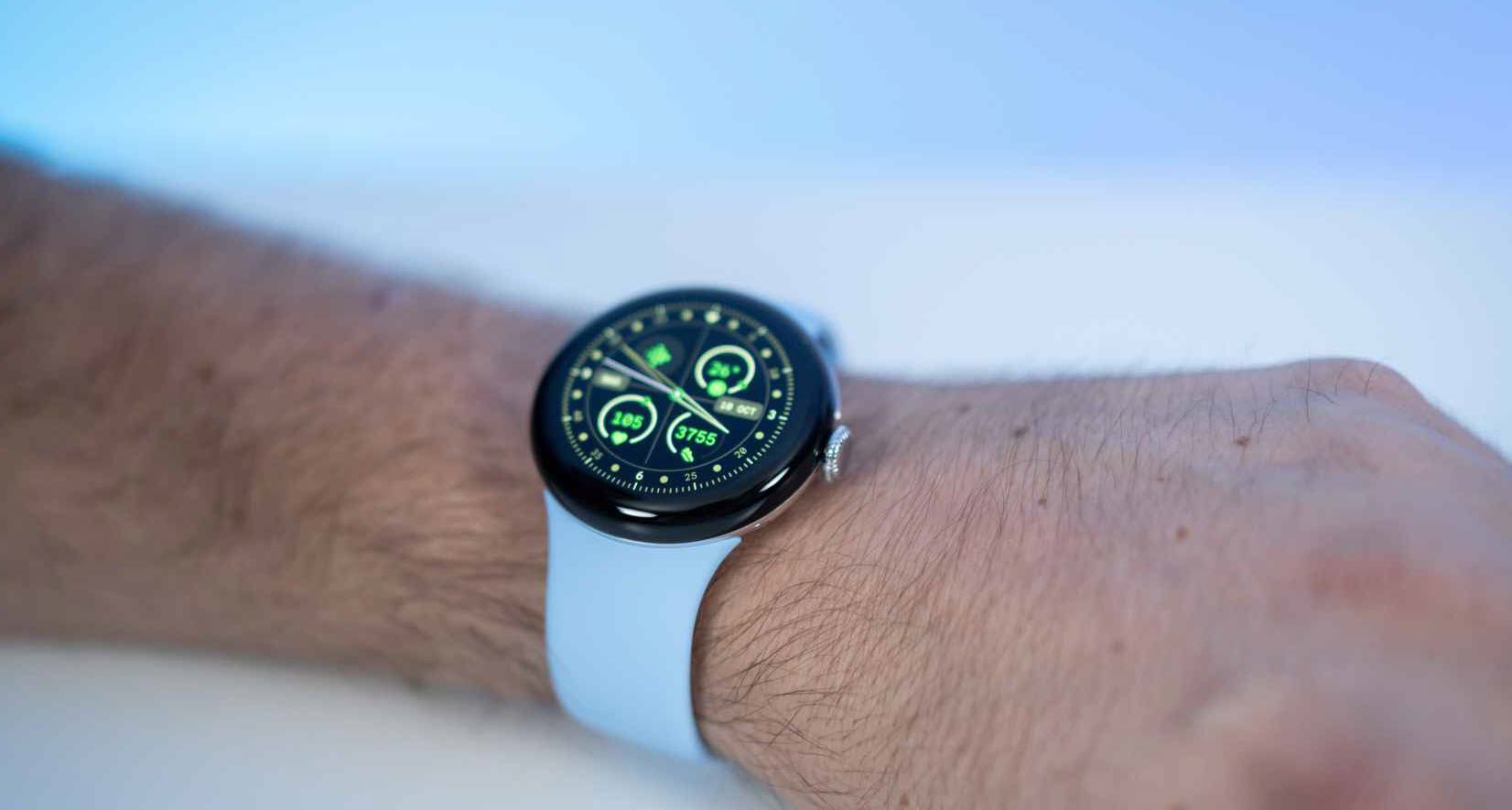
It includes sensors for monitoring blood oxygen saturation, electrocardiogram and heart rate applications, as well as temperature and a skin conductance electrical sensor (cEDA) for monitoring body response. All of this is designed to thoroughly understand the user’s physical condition and alert them when something is not right.
Google achieves this by combining two worlds: its artificial intelligence technology with Fitbit’s expertise in the field of physical activity. With it, users can instantly know their body’s response, not only indicating when and how to train but also when to rest or how to manage stress.
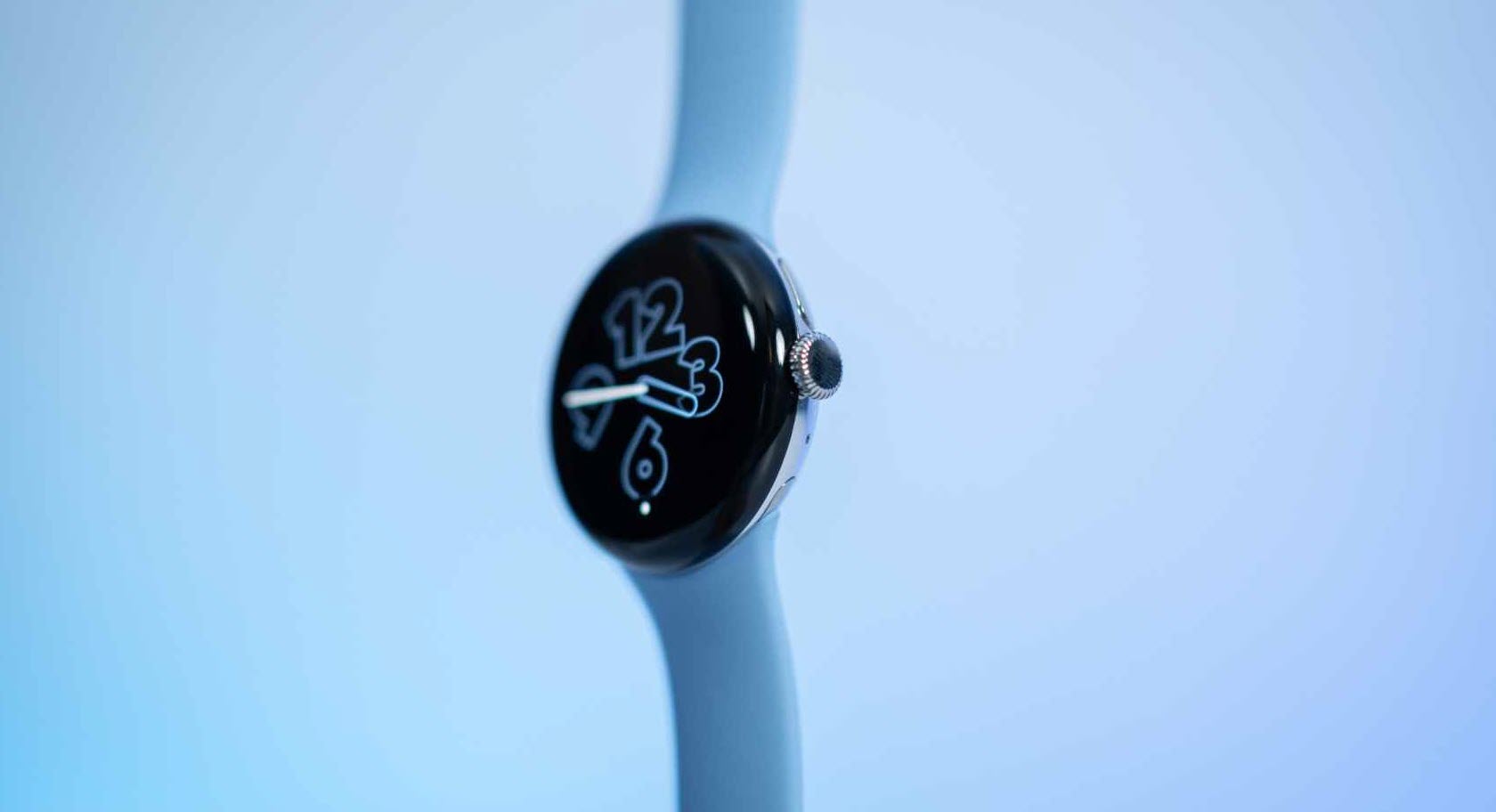
Additionally, it features other functions like an altimeter, GPS, compass, or NFC, aiming for independence from the phone— or at least not taking it out of the pocket— to make payments with Wallet or check an address on Google Maps. Moreover, you can use it for more mundane but essential tasks in daily life, like checking the result of your favorite team or responding to WhatsApp conversations.
Regarding battery life, Google promises 24 hours with the always-on display, although in the first few days of use, it sometimes fell short to last the day. We still need to perform more tests in a more normal and less intensive use to see how it behaves, but it requires a few days of calibration to get to know your body and adapt to your routines. In any case, it comes with a fast charging cable, allowing you to charge it to 80% in 43 minutes (50% in 30 minutes and 100% in an hour and fifteen minutes).
Another major novelty in Google’s new devices is the price. The Pixel 8 starts at 799 euros for the 128 GB version and goes up to 859 euros for the 256 GB version. The Pixel 8 Pro starts at 1,099 euros (128 GB) and goes up to 1,159 and 1,299 euros for the 256 GB and 512 GB versions. The Pixel Watch 2, on the other hand, is in a single version priced at 399 euros, but it drops to 229 euros if purchased with one of the latest phones.
These prices mean that these are not devices for the general public, as the Pixel 7a might be. These are high-end devices with strong features designed to last over time and make the most of their performance for years. If you want an extremely ambitious camera, I would recommend going for the Pro model—also for the larger and brighter screen. If you want a high-performance phone that takes excellent photos, the Pixel 8 is your phone. On the other hand, if you are looking for the extreme balance between price and photo quality, your phone is the Pixel 7a, an excellent mid-range phone with a fantastic camera.
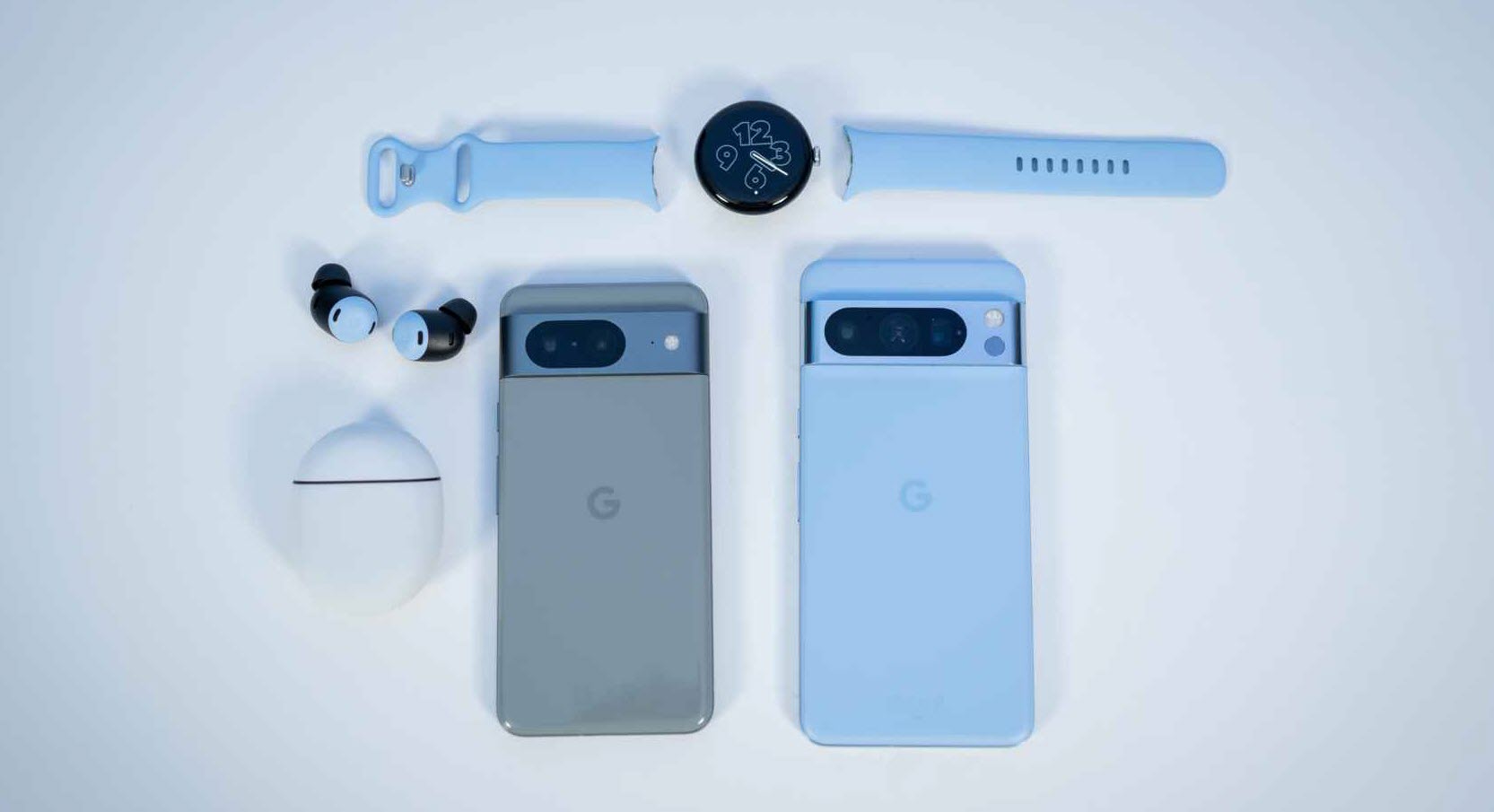
As for the watch, it has a high price compared to other compatible options on the Android market. While its performance and design are fantastic, some users may be put off by the need to charge it daily. It’s not an issue for me, as I’m used to doing it with the Apple Watch, but for those who recharge their smartwatch once a week, having to do it during shower time or breakfast may change their usual routine. In any case, it’s the best tandem you can have for the Pixel 8, just as the Apple Watch is for the iPhone or the Galaxy Watch is for Samsung phones. It’s the ideal sidekick.